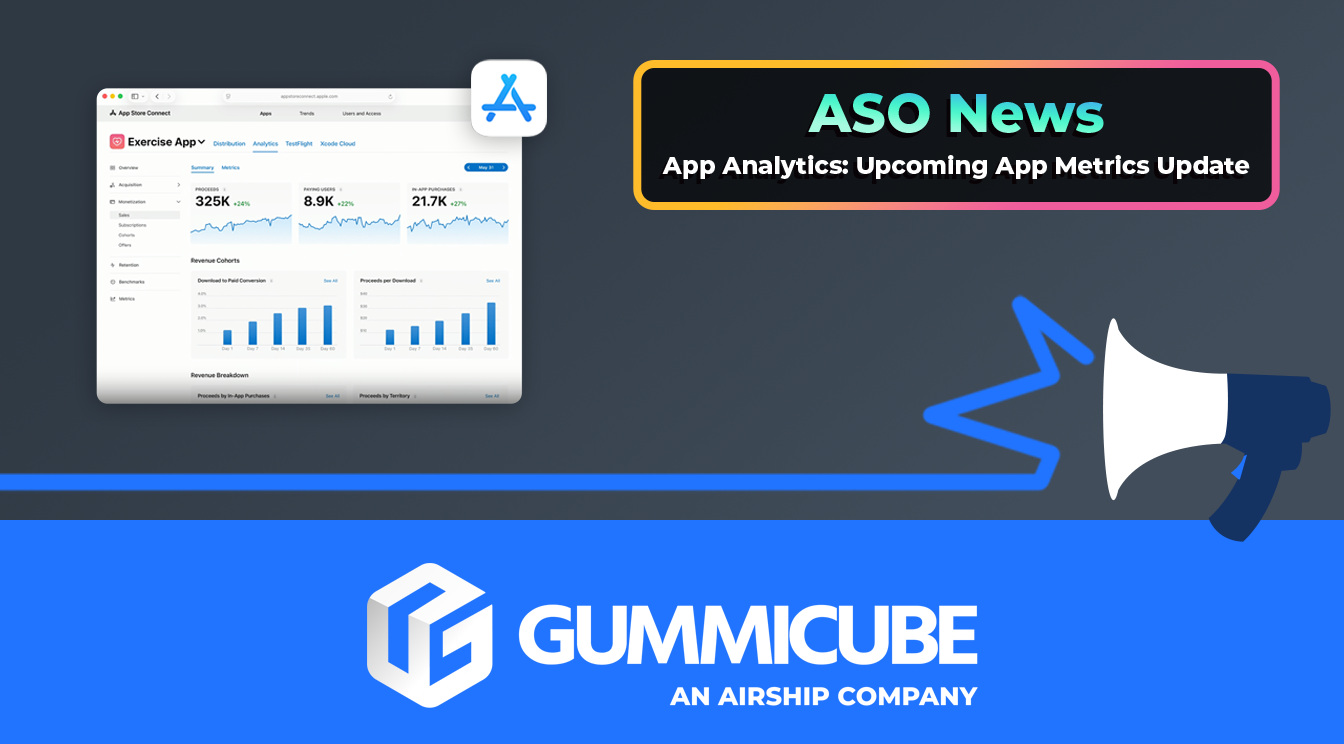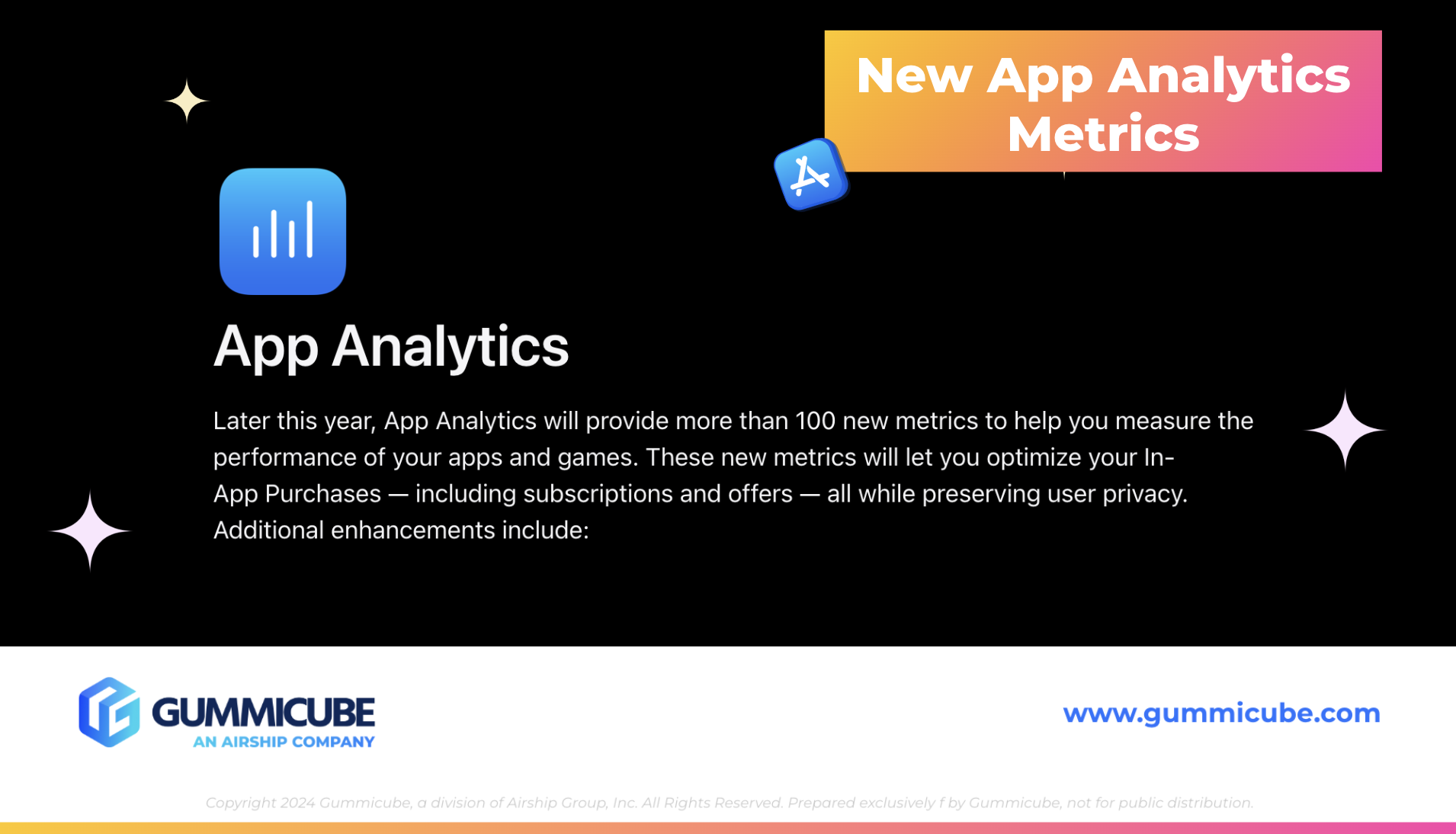
Wake Locks and How it Could Change Your ASO Strategy
Posted on December 5th, 2025
App developers have a limited window to identify wake lock issues, strengthen their performance, & protect their long-term visibility in the Google Play Store.

Apple is once again evolving the way developers understand and optimize their apps. Set to roll out later this year, Apple’s upcoming app analytics update introduces a suite of new metrics and expanded capabilities within App Store Connect. These metrics are especially useful for enhancing App Store Optimization (ASO) efforts, providing key data points that help inform keyword targeting, creative strategy, and conversion funnel improvements. These changes are designed to help developers make more informed decisions, scale business performance, and uncover growth opportunities through real-time, mobile-first insights.
For app developers and mobile marketers, this is not just a quality-of-life update. It marks a pivotal shift in how Apple presents in-app performance, monetization, and user behavior tracking. With over 100 new metrics being added and new filtering and reporting tools built in, this release will allow apps to benchmark, analyze, and optimize across every part of the user journey. From download to purchase to retention, developers will gain unprecedented access to high-value data points that were previously unavailable or difficult to dissect.
Whether your app relies on in-app purchases, subscriptions, or free-to-paid conversion models, Apple's analytics update is positioned to provide depth and flexibility that can help improve overall app performance across the board.

Apple’s upcoming update introduces new visualizations, more flexible analytics dashboards, and enriched cohort tracking to help developers better understand user behavior and revenue patterns. These changes reflect a broader commitment from Apple to support developers in growing their app businesses with more precise data.
The analytics homepage is getting a redesign. Now housed under the “Apps” tab in App Store Connect, the new home interface consolidates metrics and tools into one centralized view. This makes it easier for developers to access performance data at a glance, with less digging and toggling.
New filtering options will allow teams to segment performance data with much greater granularity. Filter by storefront, device, source type, subscription status, and more. These enhancements will help developers drill down into specific behaviors, understand user trends, and tailor their marketing and product strategies with higher accuracy.
One of the most significant additions to the analytics platform is the deep expansion of monetization tracking. For apps with in-app purchases, Apple is introducing several new key metrics that will help teams understand revenue performance in greater context.
The new sales view allows developers to track how and when users are converting from free to paid. This includes:
These monetization metrics are integrated into a more advanced cohorts page, which provides time-based segmentation of user behavior. Here, developers can assess purchasing activity by user group, track trends, and evaluate lifetime value based on acquisition source or other filters.
With the new in-app purchases chart, developers can now analyze purchasing patterns by type. Whether it is consumables, non-consumables, or subscriptions, this breakdown gives a clearer picture of what is driving purchases. When paired with the cohort analysis, developers can start to understand the reasons behind purchase decisions and build stronger monetization strategies accordingly.
For apps built around subscription models, Apple’s analytics update brings powerful new tools to the table.
The cohort view has been expanded to include subscription metrics. Developers can now see retention trends in a time-based format, allowing for more precise identification of churn points and retention bottlenecks. This is particularly valuable when testing new pricing structures, intro offers, or onboarding flows.
Apple is adding 15 new metrics specifically for subscription-based apps, separated into two categories:
These metrics unlock deeper visibility into subscription lifecycles and empower developers to refine their retention tactics and lifecycle marketing strategies.
Another key addition to Apple’s analytics suite is the offer metrics section. This new tool helps developers measure the effectiveness of limited-time offers, win-back campaigns, and promotional pricing.
Whether you are targeting new users or trying to re-engage lapsed ones, offer metrics provide performance tracking across multiple stages of the user funnel. Developers can analyze how offers influence downloads, conversion rates, and long-term retention.
This is especially useful for re-engagement strategies, where understanding the impact of a win-back offer can mean the difference between a one-time return and a retained subscriber.
Apple is also overhauling its analytics reporting system to support data exports for offline analysis. Teams can now download raw data sets for use in external dashboards, business intelligence tools, or custom reports.
This addition makes it easier to combine App Store data with other performance channels like ad campaigns, web traffic, or CRM data. For enterprise-level teams, this capability scales internal reporting and allows for deeper cross-functional collaboration.
With this update, Apple is giving developers more than just surface-level stats. These advanced analytics are designed to work hand-in-hand with your broader ASO strategy.
Effective App Store Optimization requires more than keyword placement or strong screenshots. It demands a clear understanding of user behavior and performance trends. Apple’s newest metrics can help developers make smarter adjustments by revealing how users move from download to purchase and how long they stay engaged.
But strong ASO also relies on best practices outside of App Store Connect. To get the most out of this update, developers should continue to:
Together, these ASO efforts can help the impact of the new data Apple provides. Developers can identify gaps, test improvements, and iterate quickly with a clear understanding of how those changes affect both visibility and monetization.
Apple’s new app analytics update is a meaningful shift for developers. It provides the tools needed to not only understand performance but to improve it across every stage of the user journey. With expanded metrics for monetization, subscription health, user engagement, and offer conversion, this update gives mobile teams the ability to act on real data quickly.
More importantly, it tightens the feedback loop between in-app behavior and App Store strategy. Developers and marketers can now connect performance trends back to acquisition efforts and creative elements, enabling smarter, data-backed decisions across ASO.
Are you looking to get more out of your app's performance data? Gummicube can help you translate Apple’s newest analytics features into actionable ASO strategies. Whether you need help understanding benchmarks, improving conversion rates, or aligning your creative assets with in-app behavior, our team is here to support your growth goals with real-time data ASO services.

App developers have a limited window to identify wake lock issues, strengthen their performance, & protect their long-term visibility in the Google Play Store.

Developers should focus on regular ASO, A/B testing, and clear communication of an app's value as LLMs learn and recommend apps based on queries.

The Google Play Best of 2025 winners highlight a diverse digital landscape. But even the most exceptional apps can struggle without a data-driven ASO.